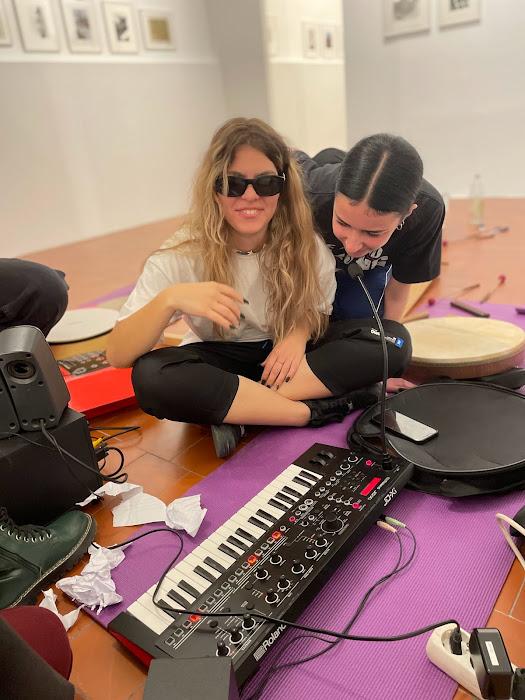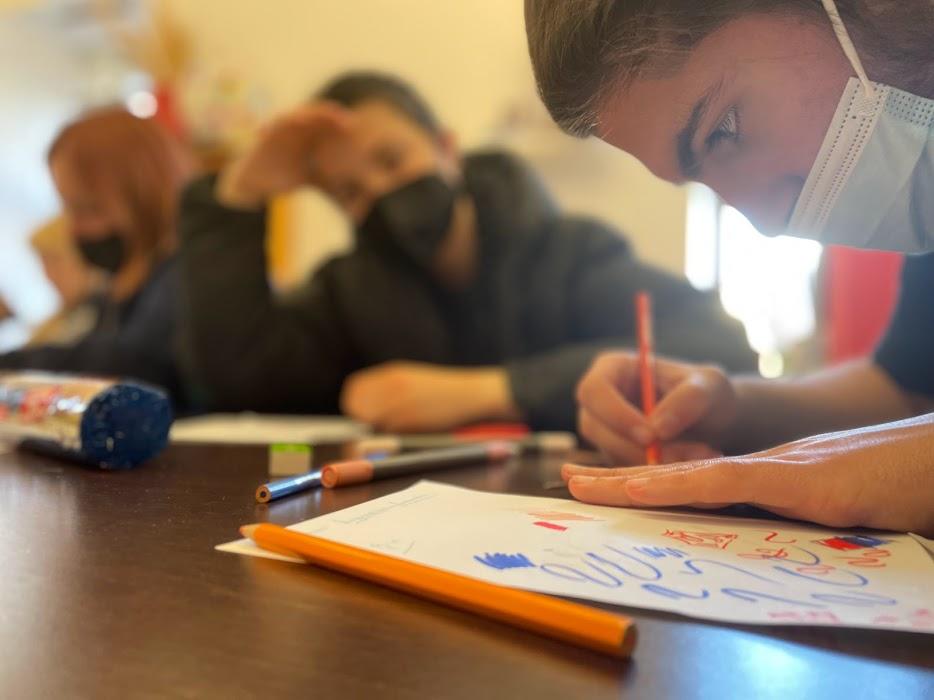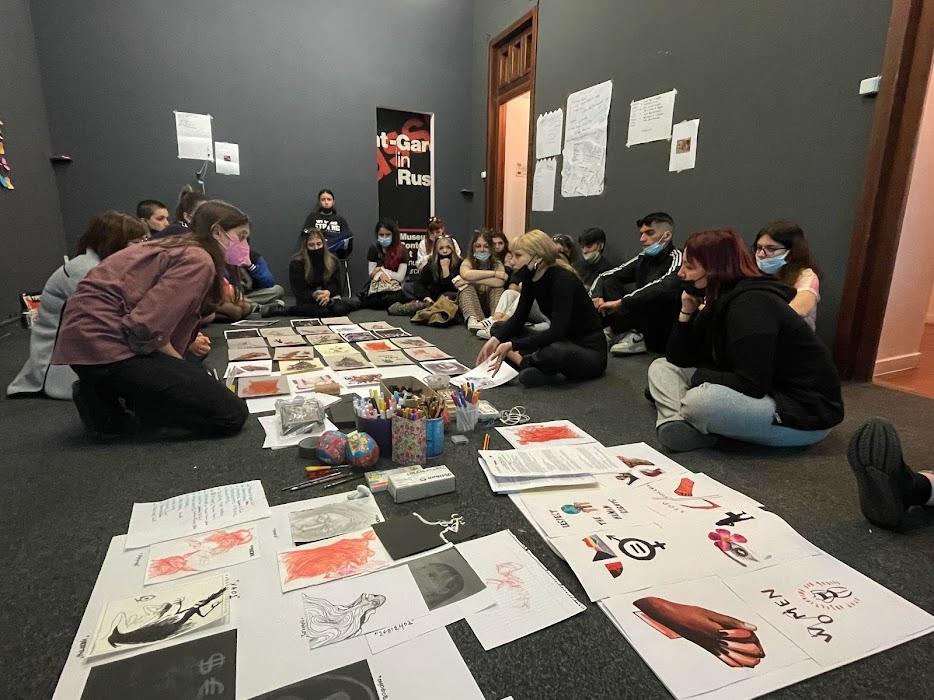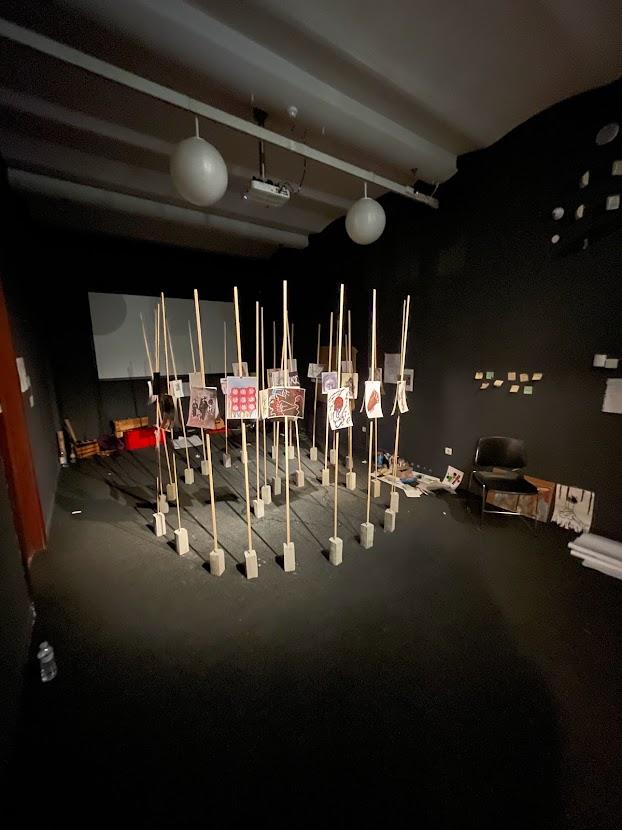Educational commons in museums: creative dialogues between young people, modern art and sounds
March 6, 2023The department of educational programs at MOMus-Museum of Modern Art-Costakis Collection designed and implemented the case study entitled ‘In and out of sync’: creative dialogues between Russian Avant-garde art and young people’s music-based experimentations.
It all started off with a question: How could we initiate a creative dialogue between young people, modern art, and music sound experimentations, building on the values of the educational commons such as collaboration, equitable participation, care, autonomy, responsability, sharing and empathy? To put it differently, we should have rather also considered how we unlearn a role, how we challenge authority, how we confute mastery, and how we give recognition to the rights of the child.
During ten, three-hour-long Friday meetings over the course of three months, students from the 1st Stavroupoli epal, a Vocational High School of western Thessaloniki, Greece, have been visiting the museum, occupying almost all its spaces.
Through the program that we run, we, as museum educators, saw an opportunity to question our roles, giving space and time to the young team to self-express, decide collectively, play, and create -it was the first time that we did not design a well-structured activity made out of predefined steps. We attended the children as travel companions, whilst remaining constantly awake to their ideas and desires in order to provide them with the necessary resources, stimuli and knowledge when the conditions were ripe for it. We allowed space for the youth to play, to discuss, to feel bored, to find out for themselves what the museum space could offer to them. They cast about for the exhibition by themselves and made their own decisions on how they wanted to engage and converse with the artworks (not through guided tours but through deep observational activities and reproducing artworks). We tried to question the museum authority by allowing freedom of movement across its spaces and cultivating familiarity with its space and members of staff; by giving permission to make noise inside the museum, improvising with gongs, kalimbas and synthesizers. But most of all, by providing all possible mediums of production for a collective work of art to come to life, one that is equivalent to every other exhibit and which would be exhibited inside and outside of the museum, made by “non-experts”. The youth as “non-expert-artists” but as experts of their own life experiences, took up the role of the co-creator.
Halfway through the program, the youth self-organized calling everyone to join an assembly through which they decided collectively on the theme of their art-work: Peace-War. We split up into two groups which worked separately from one another for a limited time. Members of the war-team initially expressed themselves through dark and fierce images, while those from the peace-team spent the whole three-hour meeting discussing all those things that peace is not. In that context, the youth shared with us personal stories and experiences of school violence, harassment and injustice. The school’s collective trauma caused by the activity of groups of far-right supporters inside the classrooms also surfaced through these discussions. Issues that matter to the students and affect their everyday lives inside and outside of school came to light for the right conditions of space and time were created to listen actively and attentively to everyone’s voices. Part of this collective trauma is reflected in the youth’s artwork which serves as an alternative way for them to communicate it.
Finally, the two thematic teams merged into one to create a series of artworks using drawing, printmaking, embroidery, sculptures, sketching, graphic design, music experimentations, poems and collage. Regarding the display of the artworks and their arrangement into one collective piece, the team decided to set up a 3D installation that generates energy and a sense of movement that flows upwards and inwards; a structure that resembles a cage while at the same time it climbs to the sky, transpiring freedom. The final idea of the spiral-shaped installation was processed in multiple ways until it reached its final shape: an array of wooden beams, fixed on cinder blocks built by the museum’s production, constructions that are easy to move around and be arranged in a spiral-shape, whilst providing an area for the students’ artwork to be hung using small magnets. The final artwork was arranged and installed by the youth, got spotlighted and inaugurated. (The youth team voted for the title of their artwork to be “Liberation, probably in another language”).
The exhibition opening was organized as a small celebration in the museum which was attended by the young creators who were joined by their friends and family; we all united to share the experience through dancing and celebrating and we marked the end of our time together by renewing our appointment at the museum.




This program is supported by European Union’s Horizon 2020 research and innovation programme under grant agreement 101004491.
DESIGN AND IMPLEMENTATION TEAM
Kechagioglou Maria (Education Curator MOMus)
Makatounaki Evi (Musician)
Moraitopoulou Elina (Researcher)
Papavergou Evi (Education Curator MOMus)
Paraskeva Katerina (Education Curator MOMus)
SCIENTIFIC TEAM
Nikonanou Niki (Associate Professor of Museum Education)
Panagiotis A. Kanellopoulos (Associate Professor of Music Education)
SPECIAL ACKNOWLEDGMENTS
Kosmidis Kostas (Electrician)
Kefala Artemis (Secretary)
Papaioakeim Christina (Education Curator MOMus)